Pumpkin season in Germany is from July to January. In Germany, it is called Kürbiszeit
Some facts about pumpkins
- Pumpkins belong to the Squash (Cucurbita) family
- They are native to North America and originated from northeastern Mexico and the southern United States
- Grown on all continents except Antarctica
- There are 5 major species of Cucurbita – Ficifolia, Maxima, Mixta, Moschata and Pepo
- There are over 100 varieties of pumpkin
The variety of pumpkins found in Germany is steadily growing. Up to a few years back, you could not find any Butternuts, and now they are available in most shops.
Cultivars or varieties you will not find in Germany:
- Boerpampoen – Cucurbita maxima. Varieties: Crown Prince, Flat white Boer, Ford, Jarrahdale, Long Island Cheese, Queensland Blue, Star 7001 and 7022.
- Hubbard pumpkin also Cucurbita maxima – Varieties: Green Hubbard, Chicago Warted, Golden Hubbard, Essex Red and Blue Hubbard
- Rolet Gem squash, or Skorsies, is a true South African heirloom squash. They also know as Rondini or African Smaragd. Often the Rondini you find in the shops here but it is not a real Gem squash but rather a type of Zucchini with softer skin. A gem squash has a hard thin stem and the Rondini a thicker fleshier stem.
Some of our South African shops do sell them when in season.
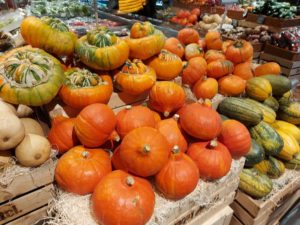
Pumpkins in Germany
| German Name | English Name | How to use | Info | |
 | Muskatkürbis | Crookneck pumpkin | Have to peel. Good for soups, baking or grilling, cooked. When hollowed out it can be used as a soup bowl. | The rich orange meat is firm and tastes fine, nutty, fruity, and almost sweet with a slight hint of nutmeg. Can be stored for a long time |
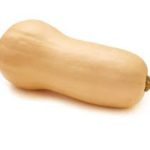 | Birnen-Kürbis | Butternut | Good for frying, stewing, steaming and stuffing. Ideal for soups, purees, cakes, jams or compotes. Goes well with garlic and chilli | Can be stored for a long time. |
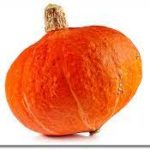 | Hokkaido | Hokkaido | Popular in soups, puree, gratin or goulash. Is also suitable for compote or pie. It does not have to be peeled, the hard skin becomes soft when cooked. Can also be eaten raw | September until October. Stores well |
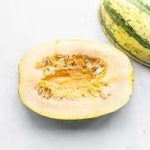 | Spaghetti-Kürbis | Spaghetti Squash | Good as a salad, with sauce, cheese or meat. Can be cooked whole. You don’t need to remove the seeds before cooking The pumpkin flesh is noodle-like after cooking. Can be used as a substitute for spaghetti and served with pesto or other pasta sauces | September until January. Do not store for long |
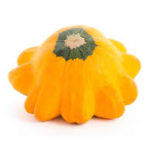 | Patisson or UFO-Kürbis | Custard or Patisson squash | Look for young vegetables. Is suitable for filling. Can be grilled or fried. The flower is edible. The peel is edible | Do not store for long. |
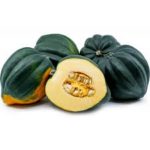 | Eichelkürbis | Acorn Squash | Tastes best when baked. The flower is also edible. Can be used in savoury and sweet dishes. | Looks very similar to Gem squash but is not the same |
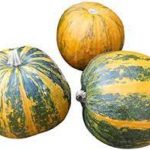 | Steirischer Ölkürbis | Cucurbita pepo var. styriaca | Can be used for all dishes, also for jams and chutneys. The seeds are used for Pumpkin seed oil or as a roasted snack. | |
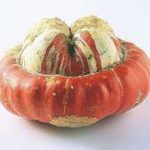 | Turbankürbis or Bischofsmütze | Turban squash | Floury consistency. Suitable for soups and purees. Is suitable for filling. Can be used in Moussaka. | Stores very well |
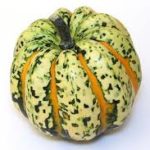 | Gorgonzolakürbis | Gorgonzola pumpkin | Raw side dish with fish or as a snack. | Stores very well |
Pumpkin seed oil
The best pumpkin seed oil is made in Austria (Styria district). It has an intense nutty taste and be used in salad dressing or served with pumpkin soup. Just a few drops are enough to enhance the soup. It can be added at the table.
Recipes
Try a hearty pumpkin soup with pumpkin seed oil or Stuffed Hokkaido Pumpkin.
If you would like to share your favourite pumpkin recipe on the website you can add it via an online form. Recipes will be published on this website. You can upload two pictures per recipe
Festivals
References
Related content
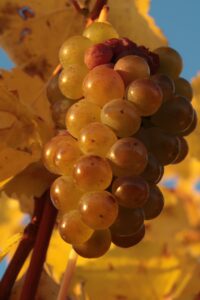
Federweißer (New wine)
Federweißer Depending on the harvest, fresh Federweißer or new wine is available from late summer to the end of October. Depending on the time of year
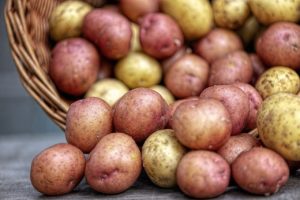
Potatoes
Potatoes are staple food in Germany. You will find it as a side to almost any dish you order in a restaurant. The good news

Raclette
The summer months are gone, and for most of us, it is too cold to have a braai with our friends. A great alternative is


You must be logged in to post a comment.